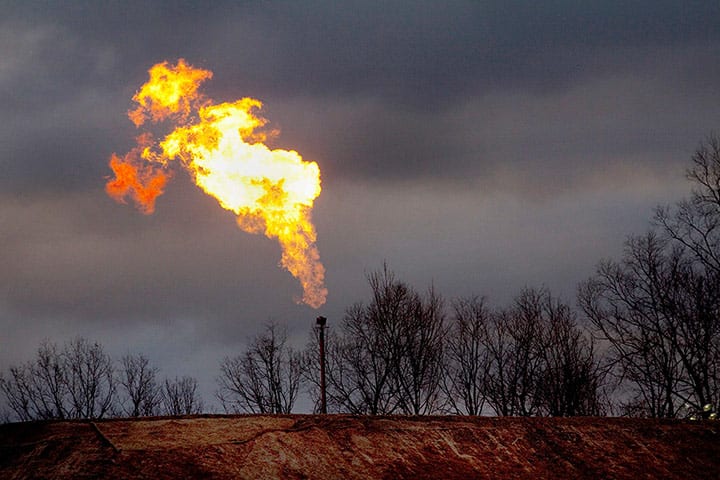Australia could be underestimating its annual greenhouse gas emissions by an amount equivalent to the output of the nation’s entire transport sector, a new report has warned – an oversight that could see Australia sail past its Paris climate target by double the amount of emissions it has committed to cut.
The report, published on Wednesday by the Melbourne Energy Institute, attributes the oversight to “significant weaknesses” in the way Australia measures emissions from unconventional gas mining.

According to the report, coal-seam gas leakages and fugitive emissions released during the ‘production’ phase of unconventional gas are effectively set to zero in Australian reporting, at only 0.1 per cent.
But according to MEI’s Tim Forcey, the report’s author and a former gas principal at AEMO, this is in stark contrast to “actual measurements” made at US unconventional gas fields, where leakage rates have been found to be up to 17 per cent of production, or 170 times the Australian assumption.
“Looking specifically at methane emission rates from unconventional gasfields, measurements in the US are up to 10-25 times higher than rates reported by the Australian Government to the UNFCCC,” Forcey writes.
This, he adds, means that if methane leakage from Australian gas fields matched US measurements, then at current production levels Australia would actually be emitting an extra 92Mt of CO2 equivalent per annum – or double the amount of emissions reductions we have committed to under the Paris Agreement.
The UN 2015 Paris Agreement for net zero emissions, which Australia is signed up to but is yet to ratify, comes into force next Thursday, after the quickest ratification of an international treaty in history.
The Australian government is already under pressure, both nationally and abroad, to develop a plan that will meet the most basic of its own climate targets, let alone those laid out in the Paris deal, which seeks to avoid more than 1.5°-2C° global warming.
The issue around CSG emissions is highly topical, given the push by the Australian government to boost gas exploitation and to put a cap on state-based renewable energy targets, particularly after the South Australia blackout which it has blamed on renewable energy.
This week’s MEI report suggests that task could be even more out of reach than many already suspected.
“We’re potentially not measuring the equivalent of the emissions from our entire transport sector,” said Mark Ogge, a principal advisor at The Australia Institute, which commissioned the report.
“If the 20 year global warming potential of methane is considered, this would equate to emissions of 232Mt carbon dioxide equivalent per annum over the 20 year period, equivalent to Australia’s entire electricity emissions.
“Australia must set about accurately and independently measuring and reporting these fugitive emissions, or we risk breaching our international climate commitments,” Ogge said.

Emissions aside, the pros and cons of coal-seam gas mining in Australia are a hotly debated and extremely divisive issue.
While the practice of “fracking” for unconventional gas was banned by Victoria’s Labor state government in August, coal-seam gas was being talked up by Queensland’s Labor state government just last week as the “fuel of the future”.
NSW’s energy minister, meanwhile, has described the growing number of the state’s farmers who oppose coal-seam gas exploration and development as “eco-fascists.”
Industry is also somewhat divided on the issue, but in February this year, AGL Energy announced it would quit all gas exploration and production as part of a move to accelerate the company’s focus on the “evolution” in the energy industry – and in response to “volatile” commodity markets.
“Australia’s national interest in climate action is clear but unfortunately keeps getting pushed to the edge by those who prefer to cling to the energy systems and politics of the past, rather than the opportunities of increasingly accessible modern, smart and clean economies,” said Climate Institute CEO John Connor in a statement on Wednesday.
“The International Energy Agency has just released a report on the global surge in renewable energy capacity transforming global energy systems. Tomorrow week the Paris Agreement …comes into force. Yet the Australian government is struggling to develop a plan that integrates our national interest in strong climate action with inclusive economic and social strategies for the switch to a clean energy net zero emissions economy,” Connor said.
Forcey also notes that Australian gas fields may actually have actually higher levels of leakage than their US counterparts, with Australian gas far closer to the surface.
“Depressurising of coal seams over vast areas increases the risk of migratory emissions,” says Forcey. “Currently measurements are taken just on the well, ignoring surrounding infrastructure through the refinement process.”










